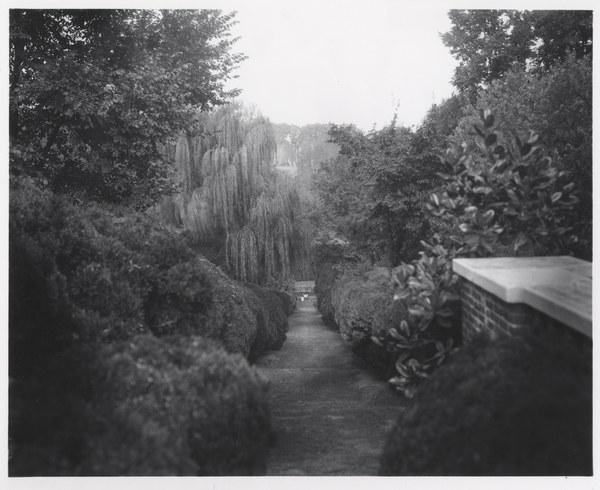Beatrix Farrand designed the Box Walk to be part of a single unit with the Ellipse. Together, the two spaces form a key-shaped enclosure, originally lined entirely in box hedges. Beginning at the northern end of the Urn Terrace, the narrow Box Walk gradually descends a long, sloping hill to the Ellipse. Paths lead east and west from the Box Walk to nearby garden areas like the Pebble Garden, Cutting Garden, and Crabapple Hill. The walk terminates at the southern entrance to the Ellipse, where it is flanked by stone pineapples the Blisses purchased at Christies in 1957. Ruth Havey placed the pineapples there in 1967.
Farrand imagined the walk as an informal allée, lined with dwarf box between 3 and 5 feet high. Because the walkway leads down a significant incline, she carefully spaced steps and long landings to keep climbers from becoming fatigued. The stairway was originally constructed out of grass treads interspersed with stone risers, but sometime in the late 1940s the entire walk was paved. In 1959, Mildred Bliss had the steps refinished to match a diamond and ellipse paving design she’d seen in a Gertrude Jekyll garden in Somerset, England earlier that year.
The Box Walk is still lined entirely in dwarf box bushes, although most of the original plants had to be replaced in the 1980s due to overgrowth and damage. Beatrix Farrand favored boxwood, and she used it heavily in her early designs, but the garden areas were replanted and updated over the years. Many of the bushes were removed to make for easier maintenance. The Box Walk is one of the only extensive box plantings that remain.

